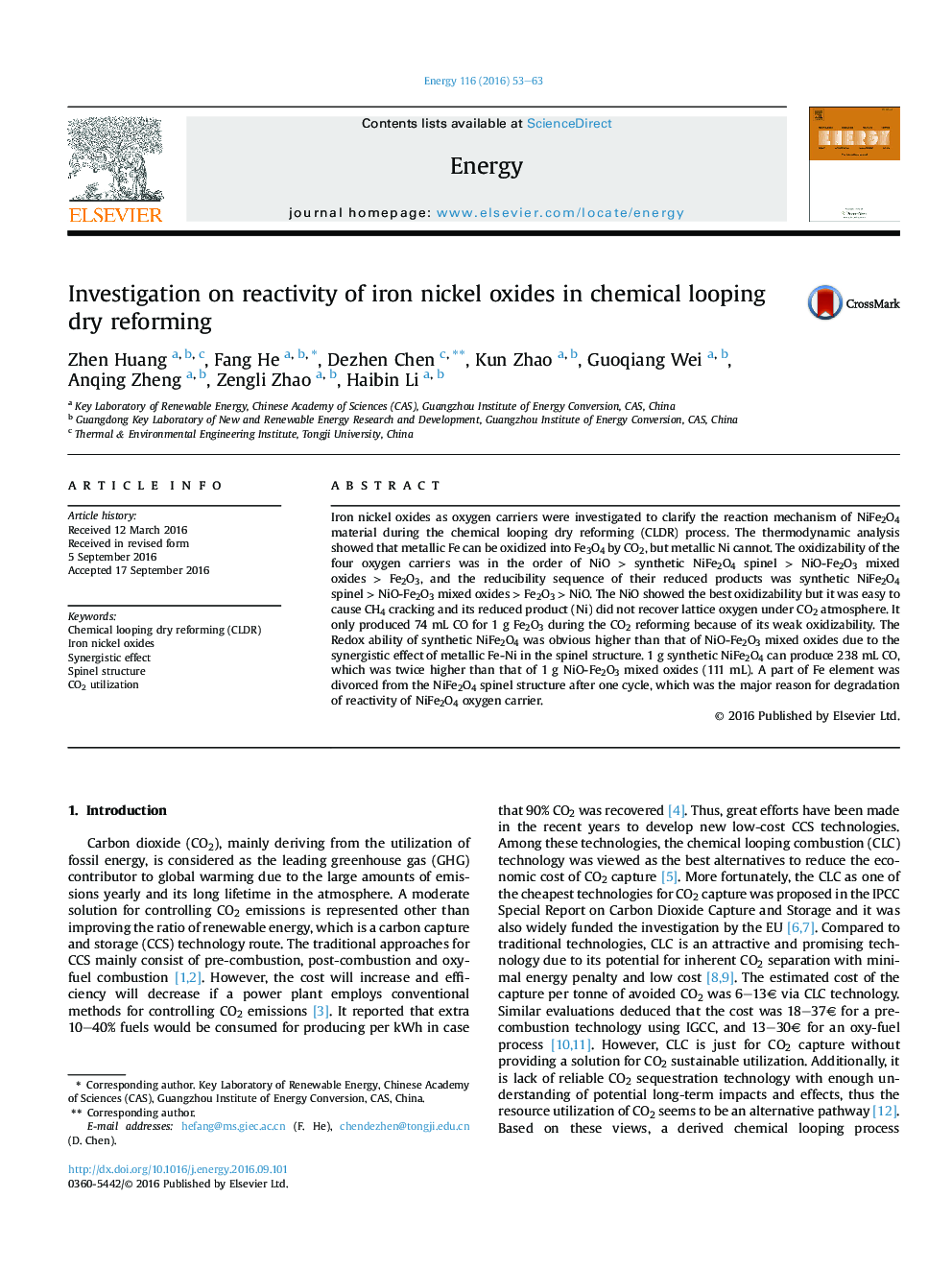| Article ID | Journal | Published Year | Pages | File Type |
|---|---|---|---|---|
| 5477270 | Energy | 2016 | 11 Pages |
Abstract
Iron nickel oxides as oxygen carriers were investigated to clarify the reaction mechanism of NiFe2O4 material during the chemical looping dry reforming (CLDR) process. The thermodynamic analysis showed that metallic Fe can be oxidized into Fe3O4 by CO2, but metallic Ni cannot. The oxidizability of the four oxygen carriers was in the order of NiO > synthetic NiFe2O4 spinel > NiO-Fe2O3 mixed oxides > Fe2O3, and the reducibility sequence of their reduced products was synthetic NiFe2O4 spinel > NiO-Fe2O3 mixed oxides > Fe2O3 > NiO. The NiO showed the best oxidizability but it was easy to cause CH4 cracking and its reduced product (Ni) did not recover lattice oxygen under CO2 atmosphere. It only produced 74 mL CO for 1 g Fe2O3 during the CO2 reforming because of its weak oxidizability. The Redox ability of synthetic NiFe2O4 was obvious higher than that of NiO-Fe2O3 mixed oxides due to the synergistic effect of metallic Fe-Ni in the spinel structure. 1 g synthetic NiFe2O4 can produce 238 mL CO, which was twice higher than that of 1 g NiO-Fe2O3 mixed oxides (111 mL). A part of Fe element was divorced from the NiFe2O4 spinel structure after one cycle, which was the major reason for degradation of reactivity of NiFe2O4 oxygen carrier.
Related Topics
Physical Sciences and Engineering
Energy
Energy (General)
Authors
Zhen Huang, Fang He, Dezhen Chen, Kun Zhao, Guoqiang Wei, Anqing Zheng, Zengli Zhao, Haibin Li,
